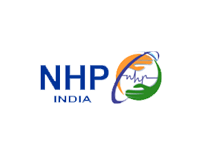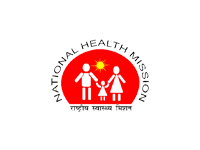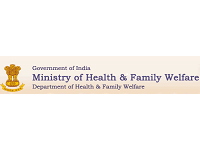As per the recently released, India HIV Estimation 2019 report, Overall, the estimated adult (15–49 years) HIV prevalence trend has been declining in India since the epidemic’s peak in the year 2000 and has been stabilizing in recent years. The estimate for this indicator was 0.22% (0.17–0.29%) in 2019 (see Figure 1). In the same year, HIV prevalence among adult males (15–49 years) was estimated at 0.24% (0.18–0.32%) and among adult females at 0.20% (0.15–0.26%).
Figure 1 Estimated Adult HIV Prevalence in India during 1983 to 2019, HIV Estimations 2019
At the sub-national level, three states with the highest adult HIV prevalence were from the north-eastern part of the country, namely Mizoram (2.32% [1.85–2.84%]), Nagaland (1.45% [1.15–1.78%]), and Manipur (1.18% [0.97–1.46%]) (Figure 2). Other states/UTs estimated to have adult HIV prevalence higher than the national average were Andhra Pradesh (0.69% [0.54–0.89]), Meghalaya (0.54% [0.46–0.63]), Telangana (0.49% [0.35–0.66]), Karnataka (0.47% [0.37–0.59]), Delhi (0.41% [0.33–0.50]), Maharashtra (0.36% [0.25–0.53]), Puducherry (0.35% [0.20–0.58]), Goa (0.27% [0.19–0.46]), Punjab (0.27% [0.22–0.35]), Dadra and Nagar Haveli (0.23% [0.14–0.37]), and Tamil Nadu (0.23% [0.16–0.29]).
Figure 2 State/UTs wise estimates of Adult HIV Prevalence (%) in 2019, HIV Estimations 2019
Nationally, there were an estimated 23.48 lakh (17.98 lakh – 30.98 lakh) PLHIV in 2019. Maharashtra was estimated to have the highest number of PLHIV (3.96 lakh), followed by Andhra Pradesh (3.14 lakh), Karnataka (2.69 lakh), Uttar Pradesh (1.61 lakh), Telangana (1.58 lakh), Tamil Nadu (1.55 lakh), Bihar (1.34 lakh) and Gujarat (1.04 lakh) (Figure 3).The tates of West Bengal, Delhi, Punjab, Rajasthan, Madhya Pradesh, Odisha and Haryana contributed another 18% of the total PLHIV size. Overall, 90% of PLHIV estimates were from these 15 States (Figure 4)
Figure 3 State/UTs wise estimates of PLHIV in 2019, HIV Estimations 2019
Figure 4 States/UTs wise estimated percent distribution of total PLHIV in 2019, HIV Estimations 2019
Nationally, there were 69.22 thousand (37.03 thousand – 121.50 thousand) estimated new HIV infections in 2019. This translates into 190 new infections every day and eight new infections every hour. State/UT-wise, Maharashtra was estimated to have the highest number of new HIV infections in 2019 (8.54 thousand), followed by Bihar (8.04 thousand), Uttar Pradesh (6.72 thousand), West Bengal (3.97 thousand), Gujarat (3.37 thousand) and Delhi (2.99 thousand). (Figure 5).
Figure 5 States/UTs wise estimated new HIV infections in 2019, HIV Estimations 2019
Nationally, 58.96 thousand (33.61 thousand – 102.16 thousand) AIDS-related deaths were estimated in the year 2019. State/UT-wise, Andhra Pradesh was estimated to have the highest number of AIDS deaths in 2019 (11.43 thousand), followed by Maharasthra (9.69 thousand), Karnataka (6.39 thousand), Telangana (4.08 thousand), Uttar Pradesh (3.87 thousand) and Tamil Nadu (3.01 thousand). (Figure-6)
Figure 6 States/UTs wise estimated AIDS-related deaths in 2019, HIV Estimations 2019
Nationally, there were an estimated 20.52 thousand pregnant women who would require ART to prevent mother-to-child transmission of HIV. States accounting for the highest need were Maharashtra (14.66% of the total PMTCT needs), Bihar (12.31%) and Uttar Pradesh (10.78%), Karnataka (6.79%), Andhra Pradesh (6.76%), Telangana (5.02%), Gujarat (4.80%), Rajasthan (4.21%), Tamil Nadu (4.12%) and West Bengal (3.31%). (Figure-7)
Figure 7 States/UTs wise estimated PMTCT need in 2019, HIV Estimations 2019
Further details on the HIV Epidemic is available on the Surveillance and Epidemiology page of the NACO’s website (http://naco.gov.in/surveillance-epidemiology-0) http://naco.gov.in/sites/default/files/Facts_figure_page.pdf

























